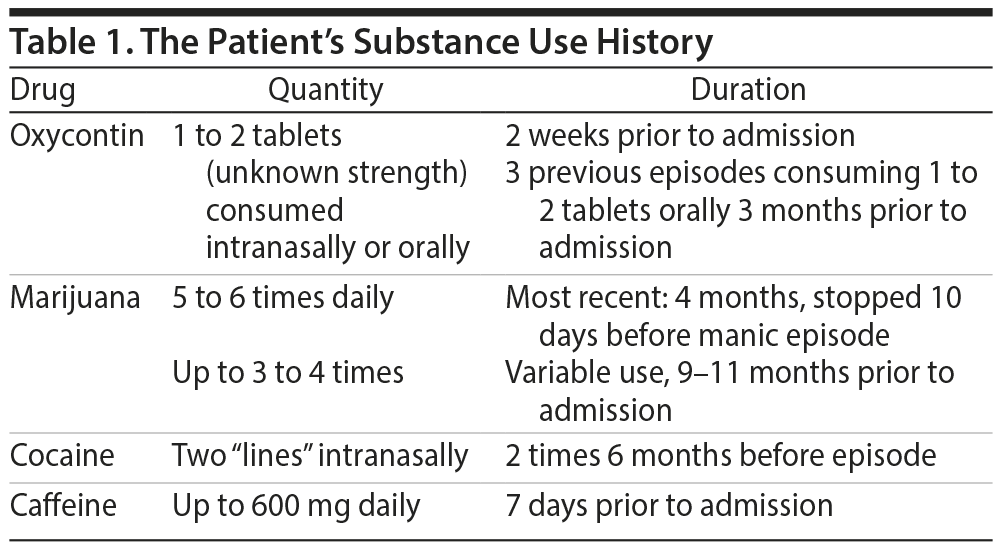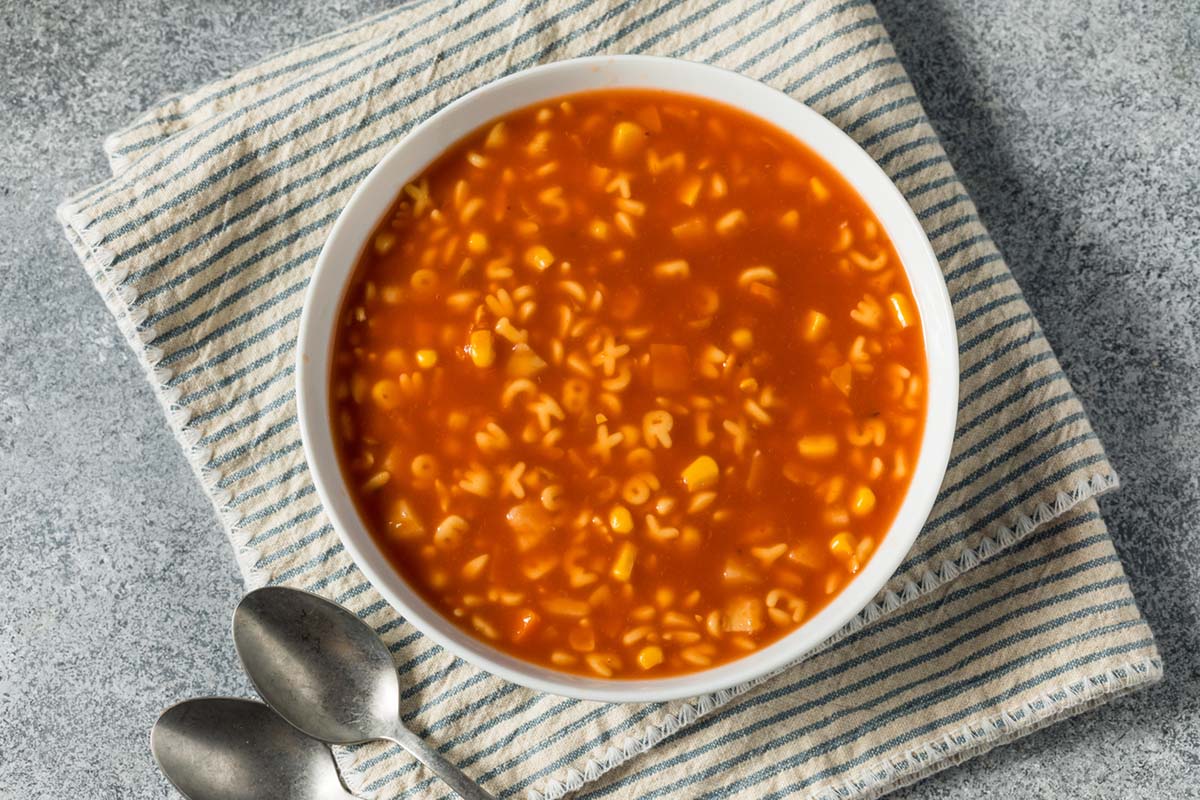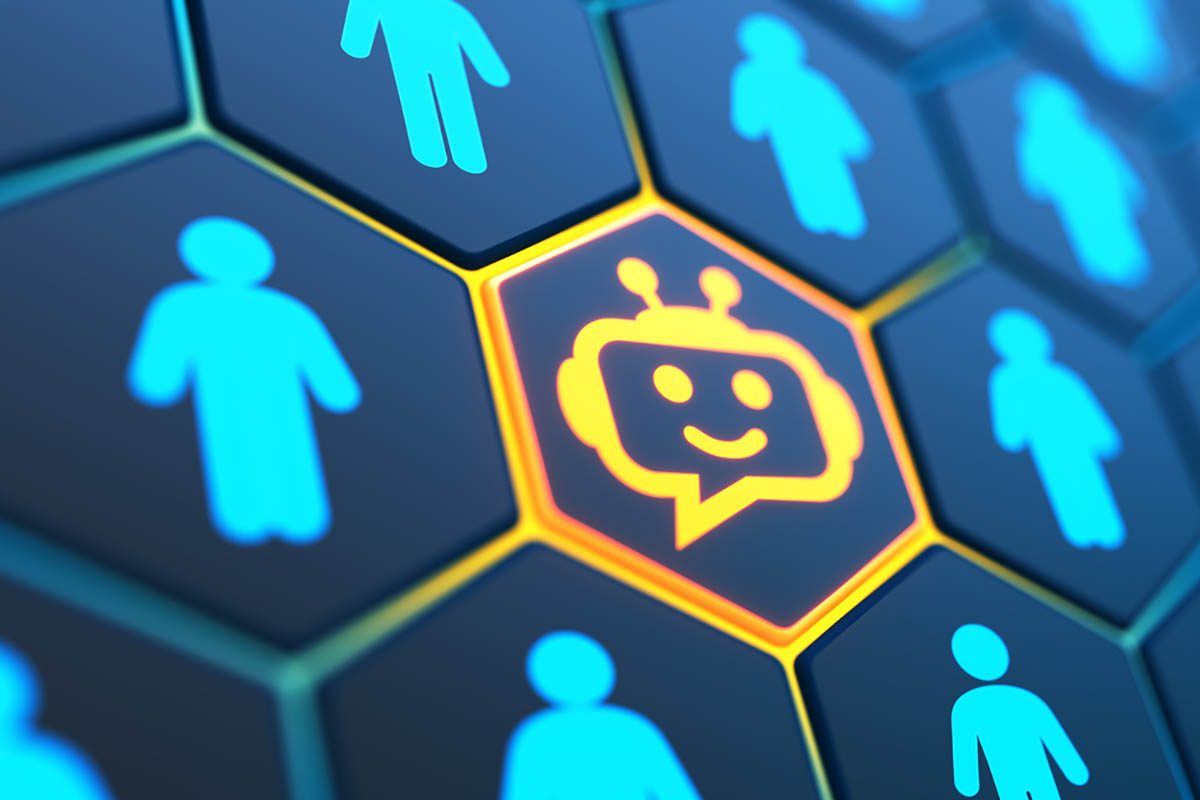Because this piece does not have an abstract, we have provided for your benefit the first 3 sentences of the full text.
To the Editor: Caffeine use has increased in the adolescent population due to energy drink consumption. We report the case of an adolescent patient who developed a manic episode (DSM-5 criteria) after the withdrawal of marijuana and the consumption of excessive caffeine. There are no reports to our knowledge of a caffeine-induced manic episode in the adolescent population.
An Energy Drink-Induced Manic Episode in an Adolescent
To the Editor: Caffeine use has increased in the adolescent population due to energy drink consumption. We report the case of an adolescent patient who developed a manic episode (DSM-5 criteria) after the withdrawal of marijuana and the consumption of excessive caffeine. There are no reports to our knowledge of a caffeine-induced manic episode in the adolescent population.
Case report. A 17-year-old girl presented to the emergency department with new-onset manic symptoms including elevated mood, tangential thought process, increased energy, significantly decreased need for sleep, grandiosity, hyperreligiosity, and delusional thoughts for a 5-day period. The patient’s family reported no significant family history of psychiatric illness. There was no history of trauma, depression, manic symptoms, or psychotic symptoms or any significant medical history. At admission, the patient’s vital signs and general laboratory values were within normal limits except for the urine drug screen, which was positive for cannabis. Her quantitative tetrahydrocannabinol (THC) level was 198 ng/mL.
With regard to substance use history (Table 1), the patient reported prior cannabis use, up to 6 times a day, and said she had stopped smoking cannabis 10 days prior to presentation. The patient reported consuming an energy drink over the 7 days prior to admission. She did not consume any other source of caffeine during this time. This drink contained 300 mg of caffeine per 16-oz container as well as an undetermined amount of creatine (amount not listed on the label). The patient reported that she consumed 1 or 2 containers of this energy drink daily during that time period. There is a warning on the container stating that children should not consume the beverage. The recommended maximum daily consumption of caffeine in healthy adults is 400 mg. The American Academy of Pediatrics discourages the use of caffeine in children and adolescents.1 Caffeine’s effect as a mood-elevating substance is the result of its interaction with adenosine receptors.2 Caffeine is an antagonist of adenosine receptors, which lie in highly dopaminergic areas of the brain, resulting in a release of dopamine that causes a blockade of γ-aminobutyric acid (GABA) receptors in these regions. Psychiatric symptoms, such as psychosis and mania, are mostly the result of the blockade of GABA receptors in the central nervous system.3
While in the hospital, the patient was started on olanzapine, which was titrated to response over the 15-day hospital stay. During the first several days of the hospitalization, the patient continued to display manic symptoms including a disorganized thought process, tangential and circumstantial speech, hyperreligiosity, and paranoid delusions. As the medication was titrated, her manic symptoms decreased significantly. By the end of the hospitalization, the patient was near baseline as per parental report.
The differential diagnosis during the course of hospitalization included all bipolar disorders in DSM-5. It was unclear whether the patient would have displayed manic symptoms even in the absence of cannabis and her consumption of energy drinks. Given that she had displayed no manic symptoms previously, even when using cannabis extensively (see Table 1), and had only exhibited manic symptoms after several days of consumption of energy drinks, the most likely diagnosis was narrowed down to caffeine-induced bipolar disorder. The clinical symptoms resolved after the initiation of olanzapine, which was used for the indication of bipolar mania, and the cessation of all substances.
A PubMed search yielded many articles linking cannabis and manic symptoms in adults and several in adolescents.4,5 Another PubMed search displayed many articles linking caffeine and manic symptoms in adults.6-8 However, in PubMed, there were no case reports or articles that focused on caffeine-induced mania in adolescents.
Clinicians should be aware of caffeine intake among adolescents and mindful that energy drink consumption may induce mania. The hope is that this report will generate further awareness. More research is needed to clarify the role of energy drink consumption, along with intake in the context of marijuana use, in the development of manic symptoms.
References
1. Schneider MB, Benjamin HJ; Committee on Nutrition and the Council on Sports Medicine and Fitness. Sports drinks and energy drinks for children and adolescents: are they appropriate? Pediatrics. 2011;127(6):1182-1189. PubMed CrossRef
2. Winston A, Hardwick E, Neema J. Neuropsychiatric effects of caffeine. Adv Psychiatr Treat. 2005;11(6):432-439. CrossRef
3. Ferré S, Fuxe K, von Euler G, et al. Adenosine-dopamine interactions in the brain. Neuroscience. 1992;51(3):501-512. PubMed CrossRef
4. Gibbs M, Winsper C, Marwaha S, et al. Cannabis use and mania symptoms: a systematic review and meta-analysis. J Affect Disord. 2015;171:39-47. PubMed CrossRef
5. Iskandar JW, Griffeth B, Sharma T. Marijuana-induced mania in a healthy adolescent: a case report. Gen Hosp Psychiatry. 2011;33(6):640.e3-640.e4. PubMed CrossRef
6. Szpak A, Allen D. A case of acute suicidality following excessive caffeine intake. J Psychopharmacol. 2012;26(11):1502-1510. PubMed CrossRef
7. Krankl JT, Gitlin M. Caffeine-induced mania in a patient with caffeine use disorder: a case report. Am J Addict. 2015;24(4):289-291. PubMed CrossRef
8. Machado-Vieira R, Viale CI, Kapczinski F. Mania associated with an energy drink: the possible role of caffeine, taurine, and inositol. Can J Psychiatry. 2001;46(5):454-455. PubMed CrossRef
aDepartment of Psychiatry and Behavioral Sciences, University of Kansas School of Medicine, Wichita, Kansas
Potential conflicts of interest: None.
Funding/support: None.
Additional information: Patient information has been de-identified to protect anonymity.
Published online: November 15, 2018.
Prim Care Companion CNS Disord 2018;20(6):18l02318
To cite: Quadri S, Harding L, Lillig M. An energy drink-induced manic episode in an adolescent. Prim Care Companion CNS Disord. 2018;20(6):18l02318.
To share: https://doi.org/10.4088/PCC.18l02318
© Copyright 2018 Physicians Postgraduate Press, Inc.
Please sign in or purchase this PDF for $40.00.





